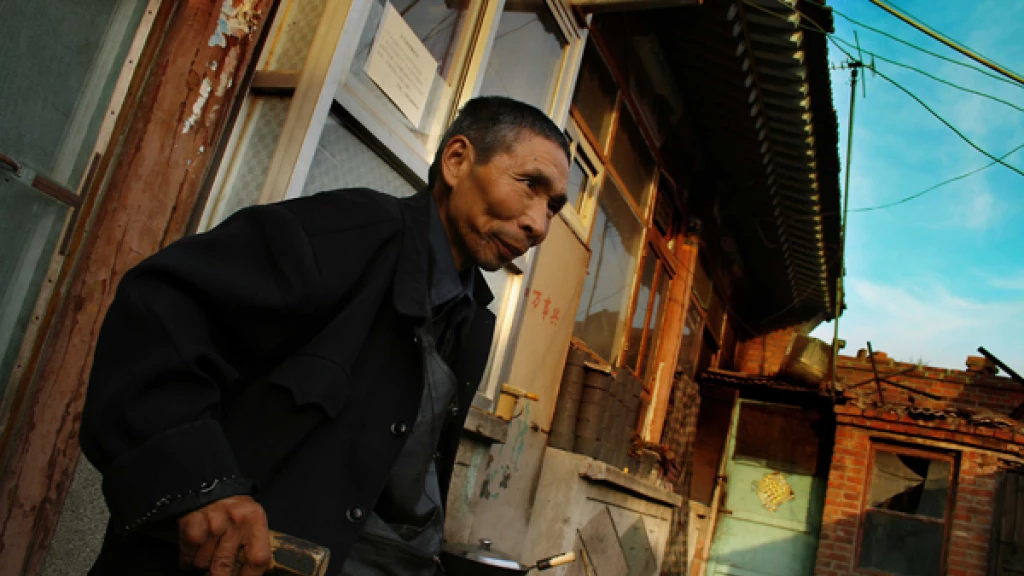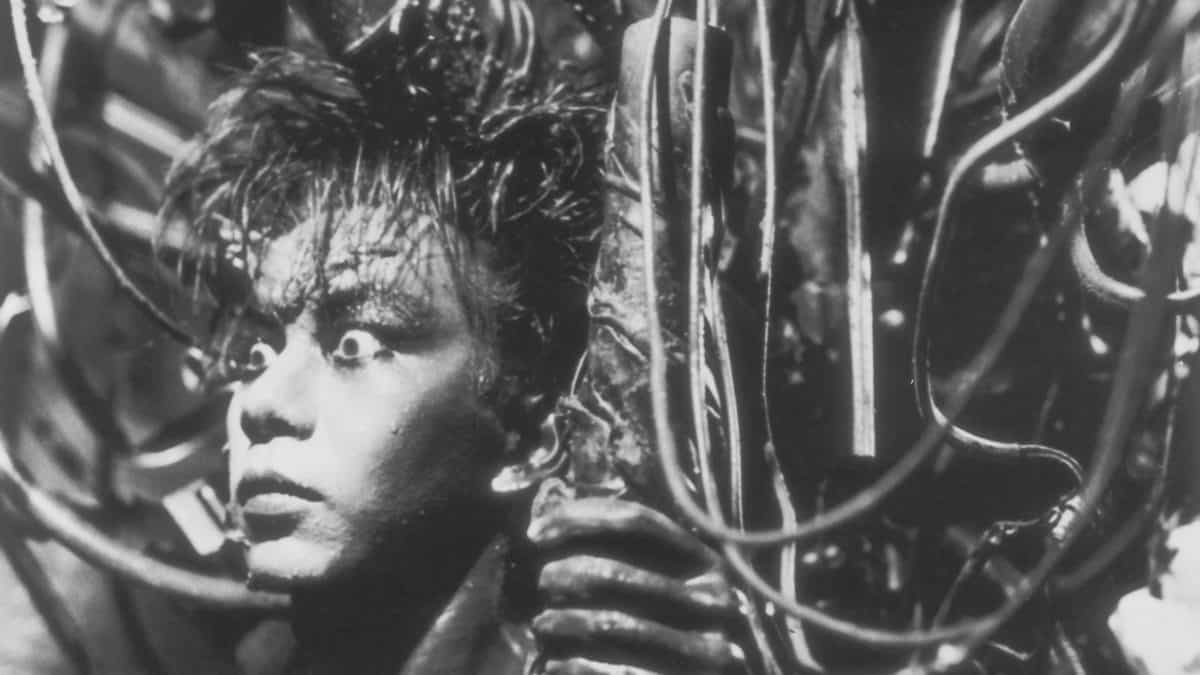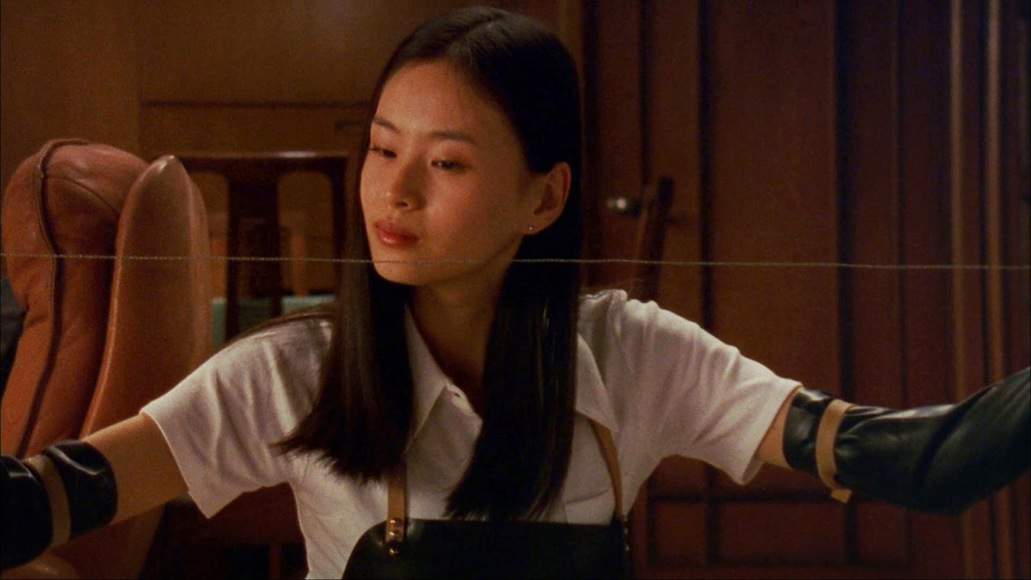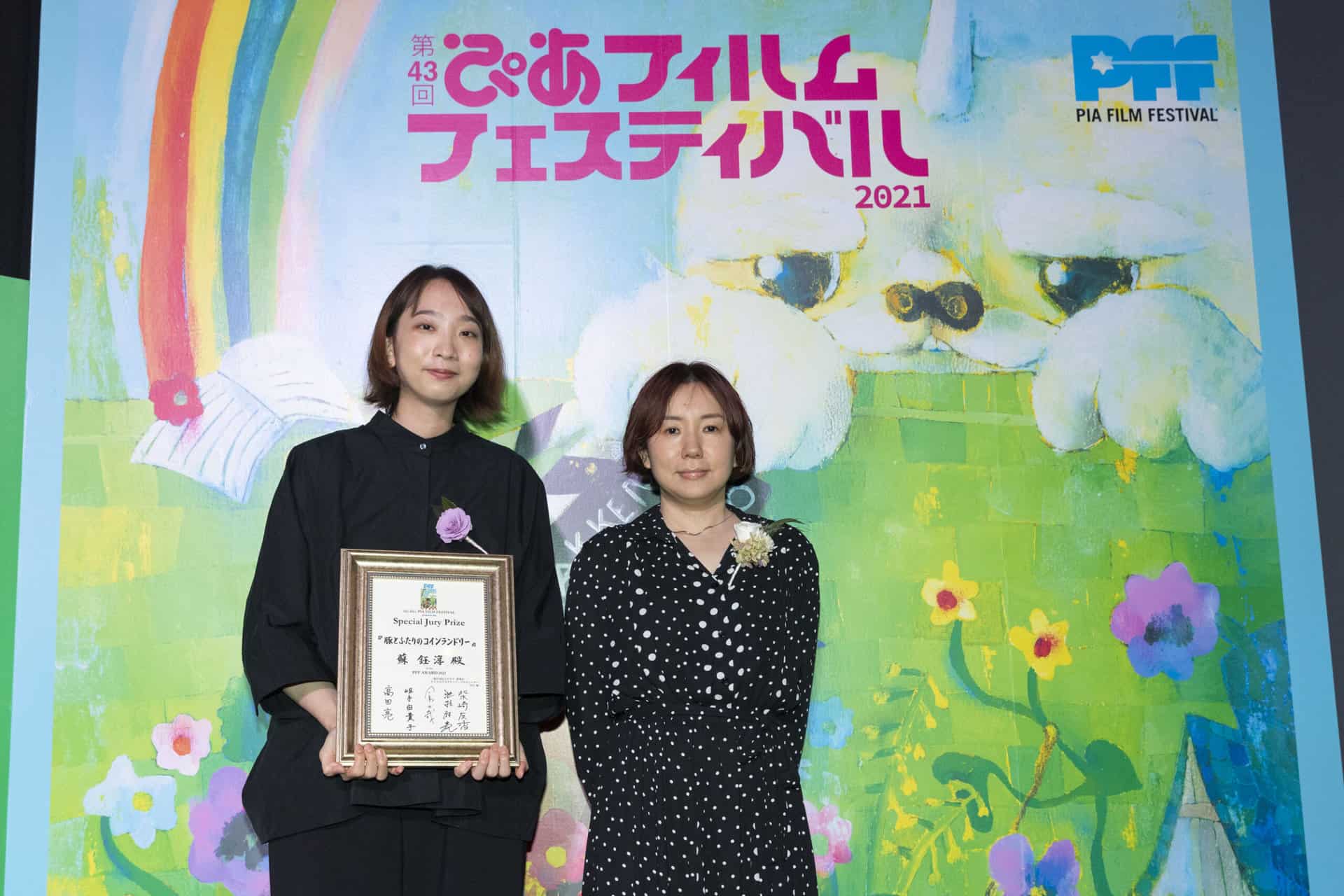Virtual Space
An emerging Chinese streaming scene, with its very specific idiosyncrasies and booming commercialization, becomes an object of scrutiny in Yue Ting's “Dancing in the Wind”. The film follows Gu Donglin (nicknamed “Red Hair Emperor”), a king of “awkward dancing” and an internet persona. The hyperactive and frantic Gu is a new type of character for Chinese documentary. Constantly online, he embraces the rapid changes in the country wholeheartedly. The viewer watches him perform from a behind-the-scenes perspective. His internet-fabricated standing turns out to be at odds with his inhabited surrounding, while the point and appeal of Gu's activities remains a mystery. The reality of Red-hair's life extends beyond the miserable material chaos, as the internet allows him to rise above the daily hardships. Struggling with thieves targeting his flat, surrounded by wannabe internet celebrities, fending off the haters on his livestream, Gu is the face of modern China's blend between virtuality and materiality. Fascinatingly, “Dancing in the Wind” has only a couple of scenes illustrating the state's response to the growing streaming phenomenon. Unregulated and ubiquitous, the streaming scene appears to be a mind-numbing and toxic space where capitalism is running riot, and its users battle for attention and virtual social status.

Li Baicheng, the protagonist of “Fortune Teller” (2010), in a way, also inhabits a virtual reality. Due to the physical handicap, he is unable to function in the usual sense of labour. In many aspects, his status remains unacknowledged by the state, as Li's disability is barely recognized. On a systematic level, he receives no support, and therefore exists in a strange judicial limbo.
In the face of the outlined challenges the main character has to make do with his ‘fortune telling' skills, which are outlawed in China. He is not only an outcast in terms of his health and social status, but also within the framework of his profession. Not allowed to propagate superstitions and beliefs in the supernatural, a practice banned in China, he has to offer his services to the provincial customers secretly. If there is any type of figure that could serve as a threat to the progress outlined by the Party, it would be Li, a shakily walking symbol of the past. Immersed in the tradition, excluded from the proletariat (in one absurd scene he is being taunted by a village official for not being a factory worker), and a propagator of the prerevolutionary customs. Li is the state's uncomfortable reminder of the leftover history, and social problems that the government does not want to recognize.
Check also this article
Two scenes encapsulate the central tension between care and control depicted in “Fortune Teller”. In the first, Li brings out a cage filled with sparrows to the park, and decides to free all of the birds. Most of them reluctantly leave their place of captivity. Some are forced to stay behind, after having spent too much time in the cage, and forgetting how to fly. Li's ridiculous attempts to resuscitate the birds with saliva only add to the grotesque. The scene's metaphorical and political implications will become apparent to any viewer. This is mirrored by another sequence, this time with Li's wife. Born deaf, mute and mentally handicapped, and later also crippled by her family, the woman is fully dependent on the goodwill of those surrounding her. In one of the most disturbing chapters of the film, she returns to the family home, and revisits the siblings. In one of the few rare moments the viewer can see Li's wife's moment of return to lucidity, as she revisits the harrowing memories of her childhood.
As it turns out later, Li's relationship with the woman is also not that of pure care, but rather of exploitation. The protagonist admits that she was the only person whom he could marry due to his social status. The marital decision was motivated by a need to have someone to regularly have sex with. This revelation only complicates the two figures' apparent companionship, and shows that the exploitative practices also extend within the marginalized societies.
The director's visual strategy is, similarly to Gu Tao's in “The Last Moose…”, that of closeness and tactility. The small digital camera hovers close to the characters' faces, and Xu Tong does not shy away from showing casual violence towards animals, or from depicting human physiology. The veristic approach to reality is at interesting odds with the literary structure of the film, which was divided into several chapters, thus mimicking old Chinese novels. The intertitles are also one of the only moments when the director finds an opportunity to sneak in his personal perspective. The creative usage of texts turned out to actually be a fixture in many of the documentaries presented in the program: intertitles, chapters and subtitles are used as means to either stitch the narrative together, provide context or comment and pass judgements. Thus, the subtitle becomes a separate, powerful tool of directorial expression, and a chance for the authors to distance themselves from the limiting cinema verité tradition which largely influenced the movement.

Liminal Space
China's rapid leap into modernity put the country in a liminal stage. Although the process was already depicted by the Chinese 6th generation directors, the independent documentary movement is more effective at capturing what's happening on the margins of China's society.
The documentaries in Sinema Transtopia's program depict the country in the middle of precarious processes. Whether that means building new barracks to house and ‘civilise' minorities like in “The Last Moose…”, creating a virtual panopticon to glue the users to smartphone screens in “Dancing in the Wind”, to finally separate children from their parents via centrifugal labour flows and urbanization in “Xiaohui and his Cows”: the great mission of modernizing China is in a liminal point. Understood in the traditional anthropological sense described by Arnold van Gennep, in order for one to go through a ritual, and leave it changed, a transitional space needs to be crossed. By capturing all the drama, ridiculousness and absurdity of the everyday, the Chinese independent cinema documentarians seem to record this intangible and wayward process of transforming the country into an amalgamation of the modern with the traditional. The CCP's ultimate goal of making the society egalitarian and equal comes at a cost of the marginalized. Those who do not fit into the outlined norm are either excluded, or have to adapt and ultimately align with the mainstream Han-Chinese pattern.
If the characters in contemporary Chinese fiction narratives are facing a dilemma of whether they accept the transformations enacted at a brutal pace or not, for the documentary protagonists the decision had usually already been made. “Fortune Teller's” Li Baicheng or “The last moose's…” Weijia may try to swim against the tidal wave of change, and oppose it, or even try to actually benefit from it. Ultimately, the new PRC has little to offer to them, unless they are willing to abandon their uniqueness, like Weijia's ethnicity, or conform to the neoliberal demands, impossible in case of Li Baicheng, whose crippled body does not allow him to perform regular tasks.
Ethnic and cultural homogenizing of the country is documented in the most recent movie in the Sinema Transtopia's program: “Singing in the Wilderness” (2021) by Chen Dongnan. In her debut feature film, like in “The Trial from Xinjiang” a decade earlier, the director again looks at the ways in which greater powers shape and ultimately eradicate the ethnic diversity in the country. Miao, a Christian minority in southern China, has been living in relative obscurity, until the discovery of their choir led to them becoming a national phenomenon. The film documents the choir's preparations to public performances, and the psychomachy among the higher-ups. On one hand, there is the choir leader who tries to maintain the Christian integrity of the organization. On the other, the local propaganda minister attempts to milk their growing success and score political points in Beijing. At the end of the day, it's a clash like any other in the PRC: tradition offers safety and stability, whereas change brings threat and opportunities.

In “Singing in the Wilderness” the pressure on the choir singers piles on. First, they are tasked with changing their repertoire (“sing something more modern”), as they perform Abba on a regional talent show. Later, on a trip to the U.S., they sing again in English, this time Bernstein's version of “Candide” opera. As none of the performers speak the language, the show pans out to be an empty exercise in marketing. The whole sequence with the characters touring the U.S. is the best metaphor of the grand masquerading that the members of the choir have to undergo.
“Singing in the Wilderness” is also a fascinating “what if” case. The project is an exception in the analysed program, as it was funded by Sundance Film Institute, and was made with a larger crew and professional cameras., The main consequence of this is the clear change in the visual style, and, by extension, tone of the film. Shallow depth of focus, static frames shot on a tripod or unusual angles all constitute a completely different approach to depicting the reality of the Miao. A much more poetic, subtle and distanced mode of representation brings the film closer to a Western documentary tradition.
Check the review of the film
In the former documentaries, like “Fortune Teller”, the director's praxis was, in principle, observational. However, the limitations of tiny digital cameras required from them shooting the protagonists up close, which in turn accidentally transformed their works into quasi-participatory films. In “Singing in the Wilderness” the usage of longer lenses, which allow the cameraperson to be farther away from the filmed object, contributed to a more distanced, or even separated, stance. The example of “Singing in the Wilderness shows that there is a clear aesthetic consequence of a larger (foreign) capital influencing the filmmaking practice.
Sinema Transtopia's program illustrated the ubiquity of various minorities, and their exclusion, from the narratives offered by the state. Three levels of space in the analyzed documentaries show that the Party's great program of modernizing the country takes its toll on those on the fringes of the society. The documentaries also depict how being a minority does not equal to being powerless. The power flows between the characters, and their constant struggle to stay on top of the changing social, political and economic landscape of the country further illustrate that.
The filmmakers predominantly come from Beijing, and are ethnically part of the Han Chinese majority. How does one address this issue whilst depicting various minorities and people in socially and ethnically disadvantageous positions? Bérénice Reynaud discusses it in her description of the ambiguous conundrum faced by the mainland Chinese directors making films about Tibet in the early 2000s, by looking at the ethical implications, of verité style filmmaking: “documentary film constructs an “Other” – the subject of the film – as opposed to the Self of the filmmaker who detains the power of framing, recording and editing (…), the implicit ethics that underlies vérité is that the opacity, the unknowability of the Other is almost sacred, and that the distance that exists between subject and object has to be respected, yet taken in stride instead of becoming the topic of the film.” A growing interest in more experimental formats marks a potential for new ways of addressing this issue. Wengnan Chen suggested ironically in one of the interviews that the only way for documentarians to overcome the temptations to exoticize and cater to the stereotyping gaze, may be to verge into fiction filmmaking.
The guerilla character of work, and operation within the system where exhibition opportunities are almost nil, render the actions of authors of analyzed films predominantly as social activism. The limited international recognition of those works will perhaps change in the coming years, with growing interest from foreign producers, and emerging importance of such figures as Wang Bing. An aesthetic transformation, and abandonment of the DIY rough digital look for the sake of a more poetic one, can also lead to films more palatable for international audiences. Ironically, because of that trend, the unique form of Chinese independent documentaries may be homogenized, just like their protagonists, forced to conform to the normative ideology.













